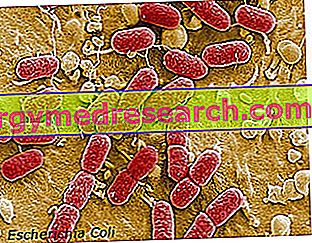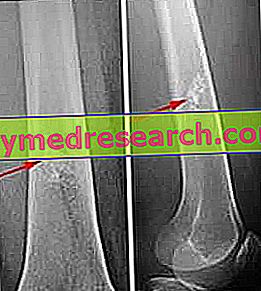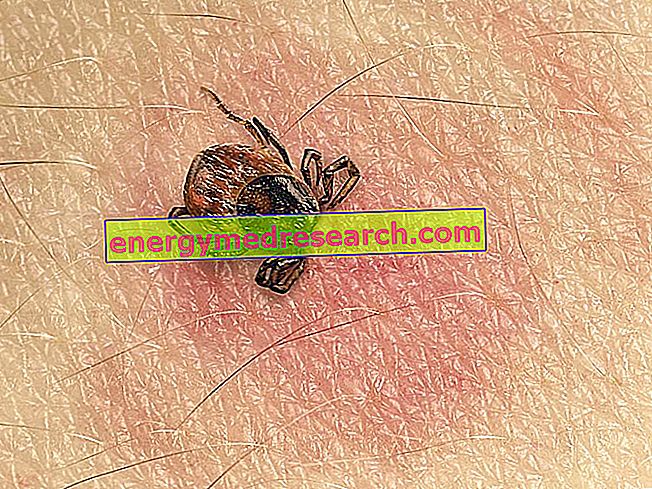By Dr. Alessio Dini
In 2011, first in Germany and then in France, there was a large number of food infections due to Escherichia Coli . In Germany the bacterium caused 38 deaths and infected over 3, 000 people; in France 7 children aged between 20 months and eight years were hospitalized with severe intestinal symptoms after eating hamburgers.

In this context we recognize food infections, toxinfections and poisoning.
MTAs occur mainly with symptoms called gastroenteritis.
Gastroenteritis is an inflammation of the digestive tract that in acute form typically manifests itself with a sudden onset of diarrhea, mostly associated with high fever (38-39 ° C) and abdominal pain, spread to the entire abdomen, which only in part they attenuate with defecation. Vomiting (especially in case of food poisoning) and general signs of infection, for example muscle pain, headache, nausea and lack of appetite, often coexist. The stools can be completely liquid, soft or semi-formed, often mixed with mucus. In particular cases the feces can be mixed with blood, in this case we talk about dysentery.
The most known food infections are those caused by the bacteria Salmonella, Shigella, Campylobacter, Yersinia enterocolitica, Escherichia coli and Rotavirus, Adenovirus and Norwalk virus.
The "killer bacterium" that caused the recent epidemic in Germany and France belongs to the family of enterobacteria (whose natural habitat is the intestine of man and / or other animals), genus Escherichia.
Escherichia coli is the most known species of the genus Escherichia. Although over 50, 000 serotypes have been typed, most of them are commensal (non-pathogenic) microorganisms while only a small number of strains are able to induce disease.
The various serotypes are characterized by different combinations of the antigens O, H, K, F (O: Somatic / parietal; K: capsular; H: Flagellate; F: Fimbriae). It is one of the main species of bacteria that live in the lower intestine of warm-blooded animals (including birds and mammals), contributing to the proper digestion of food. Its presence in aquifers is a common indicator of faecal contamination.
From the clinical point of view, there are 5 important groups of Escherichia coli : enteropathogens, enterotoxigens, enteroinvasive, enteroaderent and enterohemorrhagic .
The two recent epidemics were caused by 2 different strains of this bacterium:
- The German bacterium is called E. coli O104: H4 and before the epidemic in Germany it was already known, although very rare. Belonging to the group of Escherichia coli enteroaderenti "EAggEC", this strain expresses adhesion factors able to promote colonization of the small intestine, with stimulation of mucus production. A biofilm is thus formed which is able to isolate and aggregate bacteria. Following the aggregation there is a reduction in the length of the microvilli, mononuclear infiltration and hemorrhage.
The novelty is that this bacterium, following a mutation, has acquired the ability to produce a very dangerous toxin called shiga toxin, capable of causing hemorrhagic colitis and hemolytic uremic syndrome (SEU).
The French strain, on the other hand, belongs to the group of enterohemorrhagic Escherichia coli "EHEC".
- E. coli O157: H7 (this is its name): it was identified for the first time as a pathogen in the USA and Canada in 1982, following an epidemic of hemorrhagic diarrhea associated with the consumption of fast food burgers.
Its peculiarity is its high resistance to low temperatures; in fact it can last for nine months at a temperature of -80 ° C. Another important feature that can affect the ability to colonize the human intestine is the resistance to stomach acid. Fortunately, this pathogen is very sensitive to high temperatures (44-45 ° C); therefore the adequate cooking of foods is essential to make them safe.
The main virulence factors of Escherichia coli O157: H7 are the 2 toxins produced by Stx1 and Stx2 which cause damage to the cells of the intestinal mucosa (enterocytes) and then, entering the circulation, mainly damage the kidneys, compromising their functionality.
Therapy, in adults and children, is based on the rehydration and correction of electrolyte alterations, acid-base balance and possible blood loss. Antibiotic therapy is not recommended as it may increase the release of toxin and aggravate the general condition of the patients to whom it was administered. The most critical patients require intensive treatment based on dialysis, blood transfusions up to the kidney transplant.



